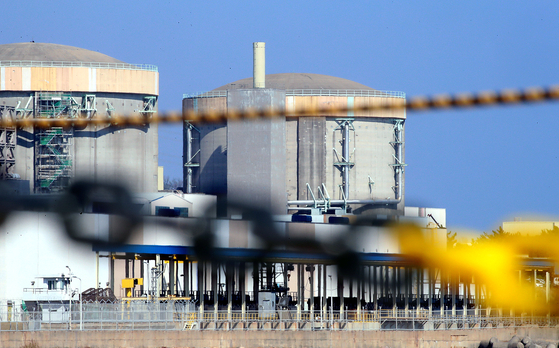
Wolseong Unit 1 in Yangnam-myeon, Gyeongju-si. yunhap news
KAIST Professor Jeong Yong-hoon, a domestic nuclear and quantum engineering authority, pointed out on the 8th that “natural things are weird, driving conspiracy into the health problems of Wolseong and Gyeongju residents” on the suspicion of detecting tritium near the Wolseong nuclear power plant in Gyeongsangbuk-do.
Prof. Yong-Hoon Jeong “For investigating water
Earlier, local civic groups claimed that, as a result of Korea Hydro & Nuclear Power’s own investigation, tritium, a radioactive substance, was detected in about 10 groundwaters in the Wolseong nuclear power plant site last year.
In addition to this argument, the Democratic Party also added. Democratic Party spokesman Shin Young-dae said in a briefing on the pending issue on the afternoon of the 9th, “Although tritium, a radioactive material, is constantly being detected in the bodies of the local residents around Wolsong Unit 1, the people’s strength has been politically contesting the government’s decision to close Wolsong Unit 1 early He said, “We are in the urge to extend the operation of the aging Wolseong nuclear power plant.”
![Professor Yong-Hoon Jung, KAIST. [페이스북]](https://i0.wp.com/pds.joins.com/news/component/htmlphoto_mmdata/202101/09/da87c203-b4df-48a9-964f-2ca1aa3a04f9.jpg?w=560&ssl=1)
Professor Yong-Hoon Jung, KAIST. [페이스북]
Prof. Jeong said on his Facebook page, “It is natural that the Wolseong nuclear power plant generates a lot of tritium, the Wolseong nuclear power plant has a higher tritium concentration than the surrounding villages, and there may be places inside the nuclear power plant higher than the boundary.” He said that there is tritium around us and in our body.
“The annual exposure of tritium to residents around Wolseong is 6 bananas (intake), 1 g of anchovies (about 0.25 g of dried anchovy), and 1 500th of what my body is self-exposed (less than a day). “It is about one hundredth of one chest X-ray,” he added. “At the level discussed now (in academia), the presence of exposure and cancer are irrelevant. The story of Wolseong radioactivity is intended for the investigation of Wolseong.”
Prof. Jeong said in the following article, “The gain gained from the early closure of Wolseong Unit 1 is that the maximum exposure to residents has decreased from 6 bananas per year to 3.4 exposures.” “It is impossible to judge whether it is recognition,” he wrote.
“(But because of this), the 700MW power plant that will be used for the next 30 years has disappeared,” citing data that “KEPCO will cost 9 trillion won more to replace Wolseong with LNG, and that money is a factor in raising electricity rates.” Sun added.
![[정 교수 페이스북 캡처]](https://i0.wp.com/pds.joins.com/news/component/htmlphoto_mmdata/202101/09/0926b75f-3e87-4b70-9aea-65f760145a76.jpg?w=560&ssl=1)
[정 교수 페이스북 캡처]
Meanwhile, last year, the Board of Audit and Inspection issued an audit result that the economic feasibility of continuing operation of Wolsong Unit 1 was unreasonably low in the economic evaluation service report due to the intervention of the Ministry of Commerce, Industry and Energy.
On the 23rd of last month, the prosecution handed over three people, including the head of the Ministry of Commerce, Industry and Energy to trial on charges of deleting related data in a pile during the audit process related to the early shutdown of the Wolseong nuclear power plant No. 1.
Reporter Seok-Hyun Ko [email protected]
